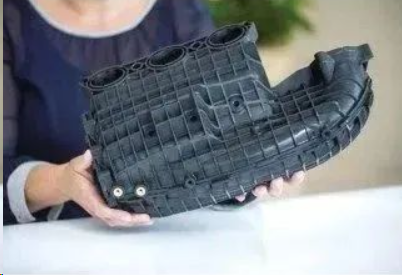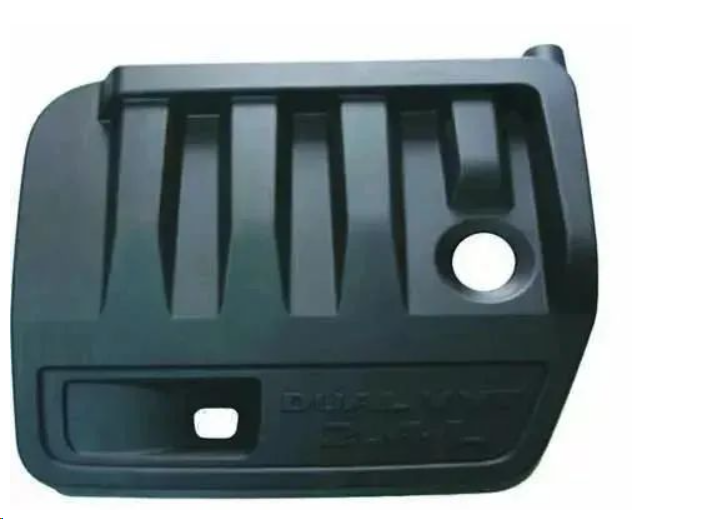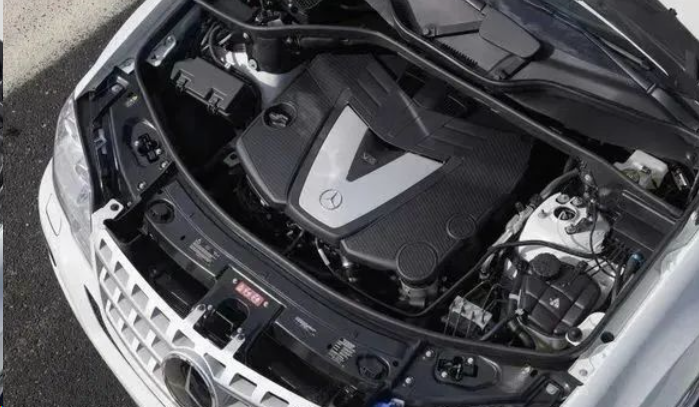Nylon has high impact strength and excellent comprehensive properties such as friction resistance, heat resistance, chemical resistance, lubricity and dyeability, especially after fiber reinforcement or alloying. Its strength, product accuracy, dimensional stability, etc. have been greatly improved. The main varieties are nylon 6, nylon 66, nylon ll, nylon 12 and other products.
In the automotive industry, nylon is mainly used in automotive engines and peripheral components. The parts around the engine are mainly heating and vibrating parts, which are required to withstand temperatures of -40°C to 140°C, and must be resistant to sand and gravel impact and salt spray corrosion, as well as the erosion of various oils and detergents.
Application of nylon in intake manifold

Generally, the intake manifold is made of cast iron and aluminum alloy materials. Since the 1980s, nylon has been successfully used to manufacture the intake manifold through the core melting method and friction welding method. Making air intake manifolds out of nylon represents a real breakthrough in replacing metal with plastic. Due to the flexibility of the design, product assembly is more convenient, and coupled with functional integration, OEMs and first-tier suppliers can benefit in terms of production efficiency and cost.
Compared with aluminum alloys, plastic intake manifolds can reduce weight by about 40% and reduce production costs by 20% to 30%. At the same time, costs can be further reduced through component integration. In addition, since the inner wall of the intake manifold is smooth, it is beneficial to improve the engine’s power and fuel economy.
The current main production method for intake manifolds is vibration friction welding technology, and the core melting method is also used to produce some complex, small-batch products. Usually the material used in nylon intake manifolds is 30% to 35% glass fiber reinforced nylon 6 or nylon 66
, such as Rhodia’s TECHNYL C218V30Black (nylon 6GF30) and TECHNYL
A218V30Black (nylon 66GF30) are widely used in the manufacture of intake manifolds.
Nylon intake manifold has four major advantages: first, it is light, usually 40% of the weight of aluminum alloy; second, it is fast, because the smooth inner wall is conducive to increasing the intake impulse, which can accelerate the power by 3%-5%; third, it saves , the nylon air intake bronchus can bring good air flow and help the gasoline to fully burn; fourth, it is cheap, and the cost is 20%-35% lower than that of aluminum alloy.
Application of nylon in brake pipes and oil pipes
Because nylon 11 pipes have the advantages of light weight, corrosion resistance, not easy to fatigue cracking, long service life, safety and convenience, good sealing, etc., European and American countries widely use it as brake pipes and oil pipes for automobiles, which is the largest consumer area of nylon materials today. In the automotive field, its total market demand accounts for about 30%. In recent years, the use of plastics in automobile chassis manufacturing has increased significantly. At this time, nylon is fully used because of its excellent temperature resistance and chemical resistance.
Another important application of nylon in the automotive field is the fuel system. Most multi-layer fuel pipes use nylon 12 as the base material, and then add fluorocarbon resin or ethylene vinyl alcohol (EVOH) as the lining. Nylon materials are used in this field The important application of nylon fuel pipes is expected to grow at a faster rate. In order to adapt to increasingly strict environmental protection requirements, automobile manufacturers are also producing multi-layer fuel pipe systems, and nylon-clay hybrid CNCID materials can just improve It has barrier properties against fuel vapor overflow, so it is widely used in fuel systems instead of halogen-containing polymers.
Application of nylon in valve cover
The valve cover is a cover used to protect the cam, while it prevents oil leakage and reduces noise. This part has traditionally been molded from aluminum or thermoset plastics, but glass or mineral-reinforced nylon is becoming ideal in this area.
Nylon’s excellent rigidity, mechanical strength and outstanding thermal aging properties at high temperatures can meet the demanding application requirements of engine compartment components. At the same time, due to the harmonious combination of glass fiber and mineral powder, it has low shrinkage and isotropy, so the warpage deformation is small. In addition, since the modified material has relatively low thermal expansion when the temperature rises (the molded parts have very little creep after passing the 5000h high-temperature test), oil leakage can be avoided. Furthermore, more complex oil and gas separation systems can be integrated through welding to reduce oil consumption and meet increasingly stringent emission standards.

Application of nylon in cooling and heat dissipation systems

The automobile cooling and heat dissipation system is the main factor affecting the life of the engine. Especially today’s new generation of powerful engines need to operate at higher temperatures, causing the engine cooling components to be subjected to strong temperature and pressure changes in the ethylene glycol environment. At this time Poor cooling or heat dissipation can have disastrous consequences for the engine. Nylon applications involving automotive cooling and heat dissipation systems mainly include: radiator water chamber, expansion tank, thermostat cover, fan blades and fan brackets, etc.
Glass fiber reinforced nylon 66 material performs well at relatively high temperatures and��Its mechanical properties can still be maintained in antifreeze environment. Not only that, in order to occupy the highest point in the future, the new generation of engine cooling parts uses new nylon materials. The service life under the same conditions of use is increased by more than 70% compared with standard grades. The parts made of it can be used in refrigerant liquids up to 160°C. environment.



 微信扫一扫打赏
微信扫一扫打赏
